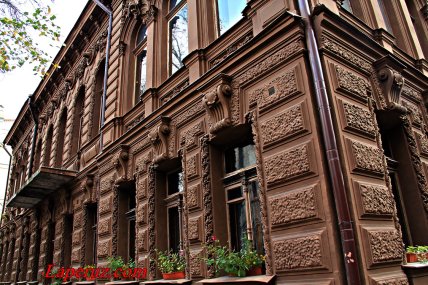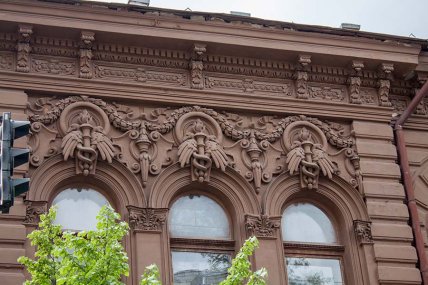Discover the most delicious house in Kyiv: what it looks like and where to find it (with photos).
Many buildings in Kyiv have a unique history that traces back to a distant past. One of the most unusual and memorable landmarks in the capital is undoubtedly the Chocolate House on Lypky, which was constructed in the 1880s.
The mansion received its "delicious" name due to the rich brown color of its facade, which makes the house appear to be made of dark chocolate tiles. Originally, the building belonged to the merchant and philanthropist Semen Mohyltsev – one of the wealthiest individuals in Kyiv, and today, anyone can visit it.
"Telegraph" has decided to share with its readers the history of this unique house and its complex fate.
The History of the Construction of the Chocolate House in Kyiv
 1
1 The plot initially belonged to the well-known career general Konstantinovych, and later to his widow. After her death in 1862, the heirs divided the estate into parts.
In the 1870s, the plot was fully purchased by Baroness Ikskul-Gildenband. Between 1881 and 1883, a wooden one-story house and a wing were built on the estate. After the baroness's death, the entire estate passed into the ownership of her son — Baron Ikskul-Gildenband in 1898.
In April 1899, he sold the corner part of the estate, which was 321 square fathoms with a one-story wooden house, to entrepreneur and philanthropist, member of the accounting committee of the Kyiv office of the State Bank Semen Mohylyevtsev, while he built a rental house on the remaining part of the estate, which measured 291 square fathoms.
 2
2 Mohylyevtsev demolished the wooden corner house and erected a luxurious two-story brick mansion in its place. It is widely believed that the project was designed by architect Vladimir Nikolaev; however, there is no definitive documentary evidence that he was indeed the builder of the Chocolate House.
Interestingly, Mohylyevtsev did not live in this mansion — it served as his office. He also held receptions here. According to legend, the merchant built this lavish mansion for secret meetings with his beloved, who was a married woman.
The Architecture of the Mansion
 3
3 The unusual appearance of the building catches the eye at first glance, and its architecture combines several styles. The form reflects palace Renaissance architecture with expressive facades. It features numerous additional details, including symbols belonging to the first owner. On the facade, one can notice relief torches and lions.
 4
4 Particularly interesting are the color and shape of the panels on the house. They are rectangular and dark brown, resembling real chocolate. This is why the mansion is nicknamed the Chocolate House. Today, it stands as a monument of history and architecture.
Inside, the Chocolate House is a true museum of interiors from different eras, as each hall is designed in a different style: French, Byzantine, Eastern, New Russian, Baroque, Renaissance, and Art Nouveau.
 5
5  6
6 What is Located in the Chocolate House
 7
7 After Semen Mohylyevtsev's death in 1917, the estate was inherited by his numerous nephews. Subsequently, the house was inhabited by merchants, government officials, historian Matviy Yarovsky, and many other prominent individuals.
In 1925, the house was transferred to the scientific workers of the All-Ukrainian Academy of Sciences. At that time, the large mansion was divided into apartments.
In the 1930s, the house came under the management of the NKVD. Then, in the 1940s and 50s, it housed the All-Union Society for Cultural Relations with Foreign Countries.
From 1960 to 1982, the Chocolate House served as the Central Palace of Marriage, where many couples got married and took photographs. However, in 1982, a new building was opened specifically for this purpose, and the Chocolate House was transferred to the Department of Culture and Arts.
 8
8 In the 1980s and 90s, after renovation, a children's art gallery was established in the building. Since 2009 and to this day, it has been a branch of the National Museum "Kyiv Art Gallery."
Where the Chocolate House is Located
 9
9 Address: 17/2 Shovkovychna Street.
Opening Hours: daily from 7:00 AM to 8:00 PM.
For inquiries: +380 44 253 0521.
 0
0 Previously, "Telegraph" reported on the mystical secrets hidden in the Kyiv Castle "Richard." This majestic structure was named after the English King Richard I the Lionheart, who became the hero of Walter Scott's legendary novel "Ivanhoe."